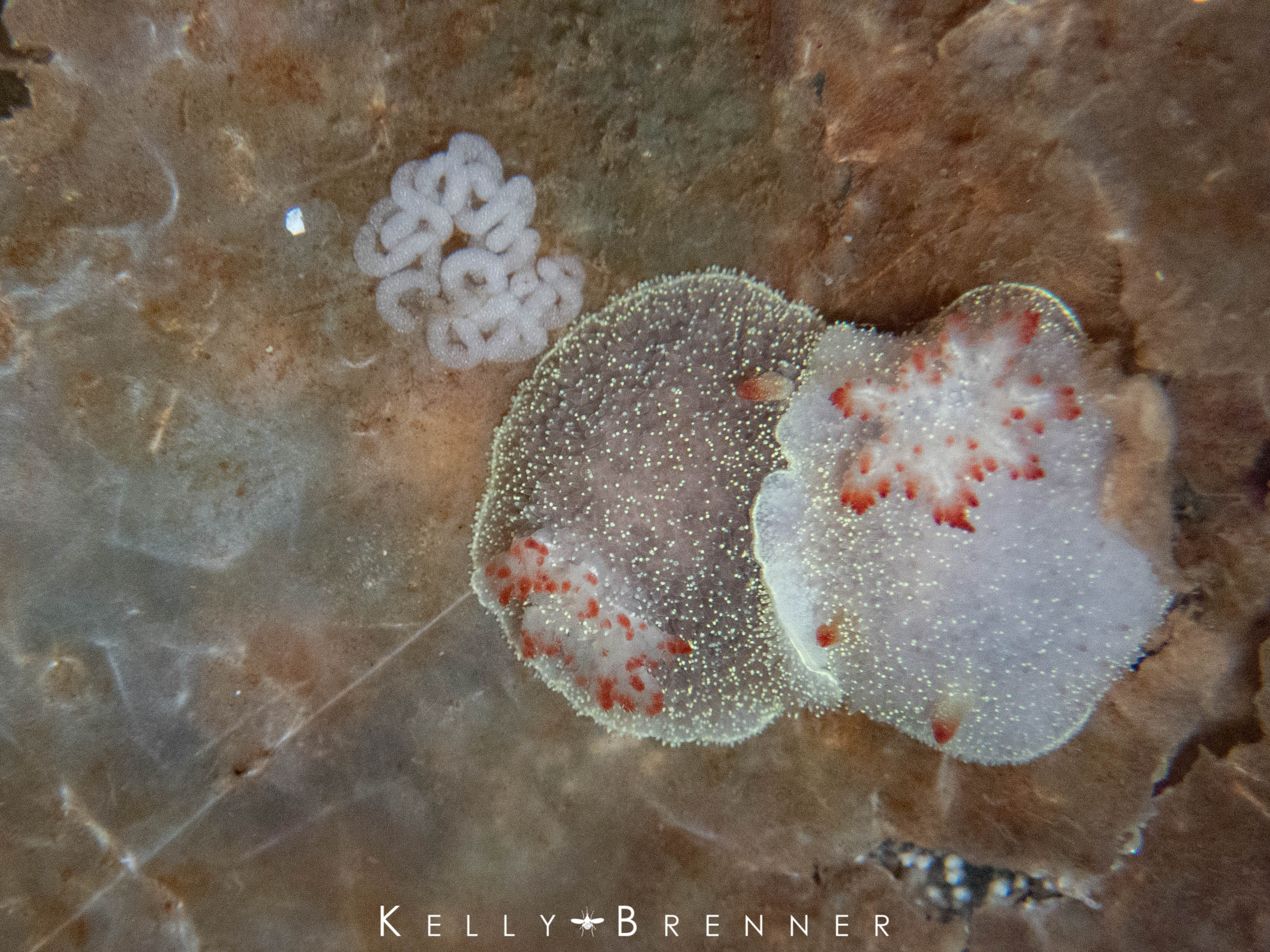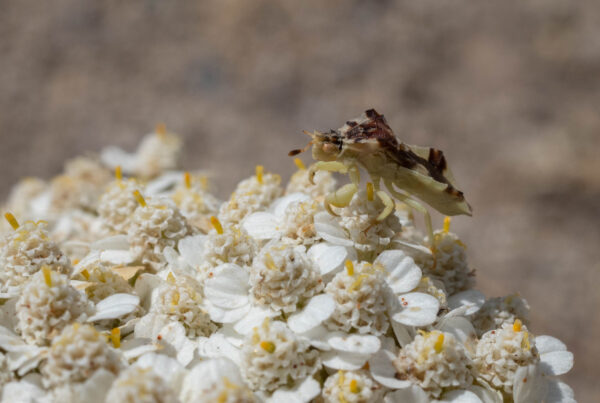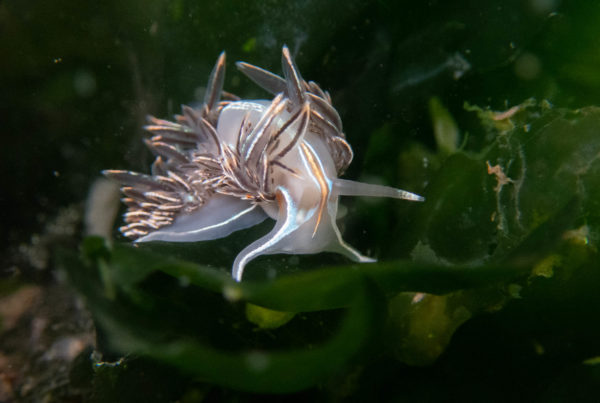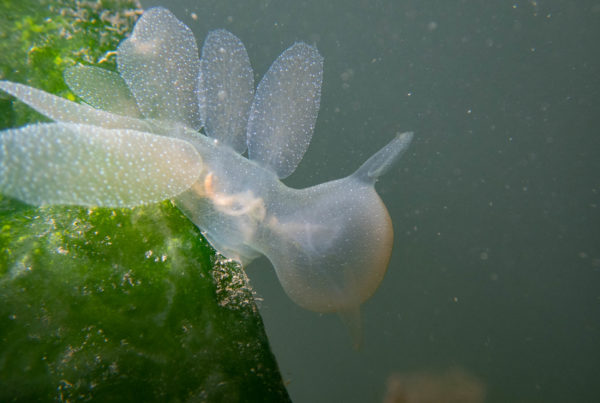My overnight camping trip to the Olympic Peninsula to visit the beach for low tide got literally rained out, so I opted to visit the ferry dock close to home instead and did I get a lucky break! Although the tide wasn’t terribly low it was good enough to get out with my chest waders and search under the dock. The water was still very cold and although my waders are insulated, my feet got a little numb. But nowhere near as numb as my fingers which I tormented by making them hold my camera under the water to photograph the multitudes of nudibranchs I found.
I often find several species in this location, but I think I may have found 10 on this visit, which is more than I believe I’ve found before.
Diamond Back Tritonia
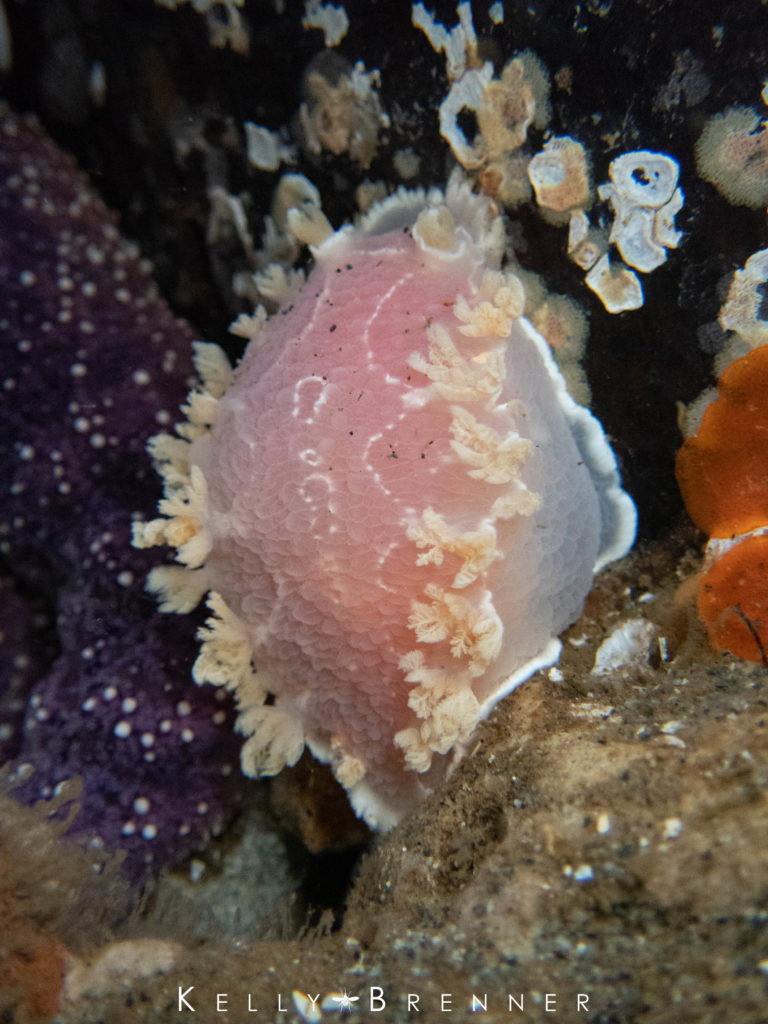
Starting with my most exciting find was a single Diamond Back Tritonia (Tritonia festiva). I have seen them in that location before, but I didn’t see one all of last year no matter how much I looked so I was happy to see one again. These feed on the sea pens which are abundant in the area.
White Line Dirona
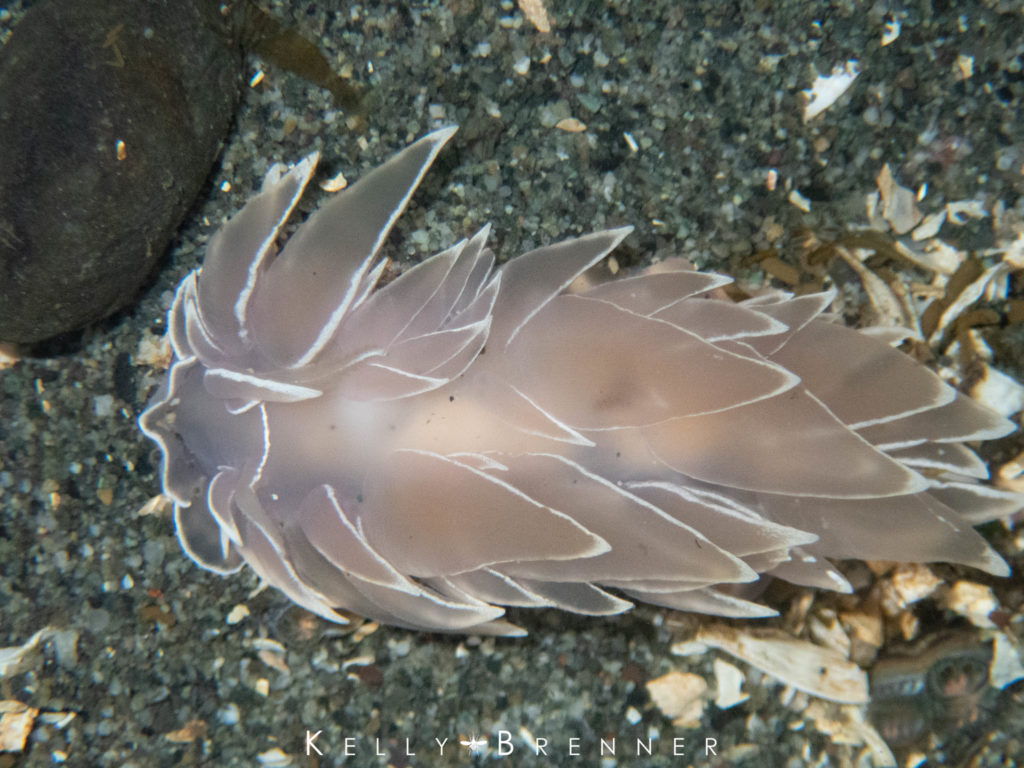
Thick Horned Nudibranch
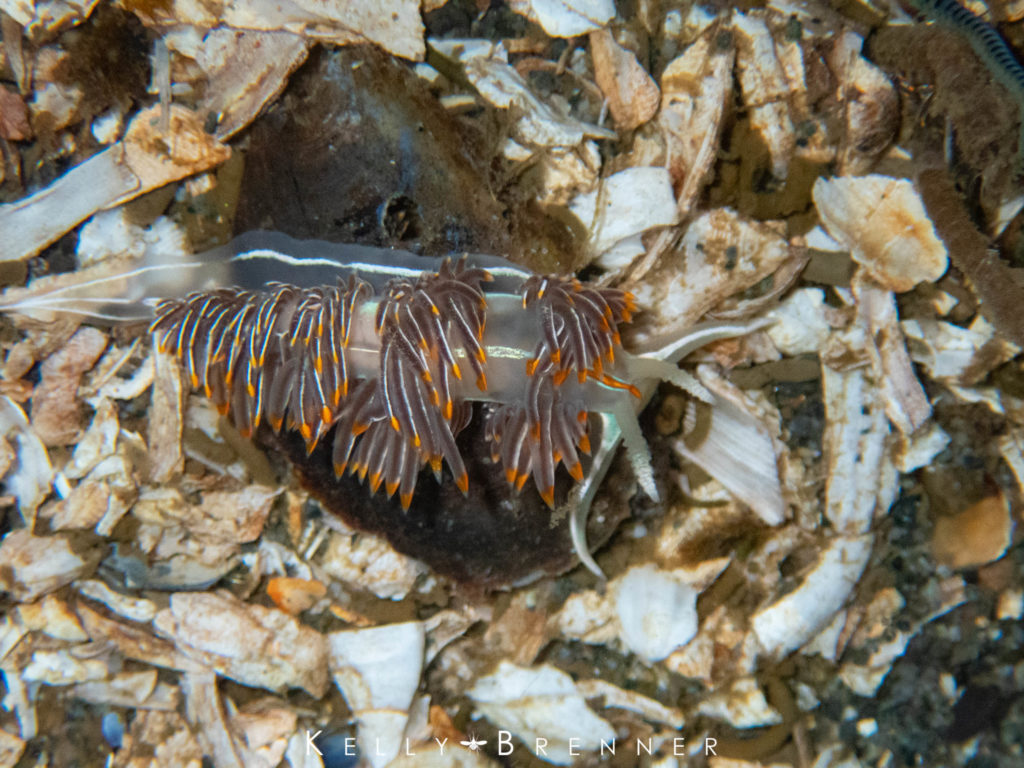
Shaggy Mouse
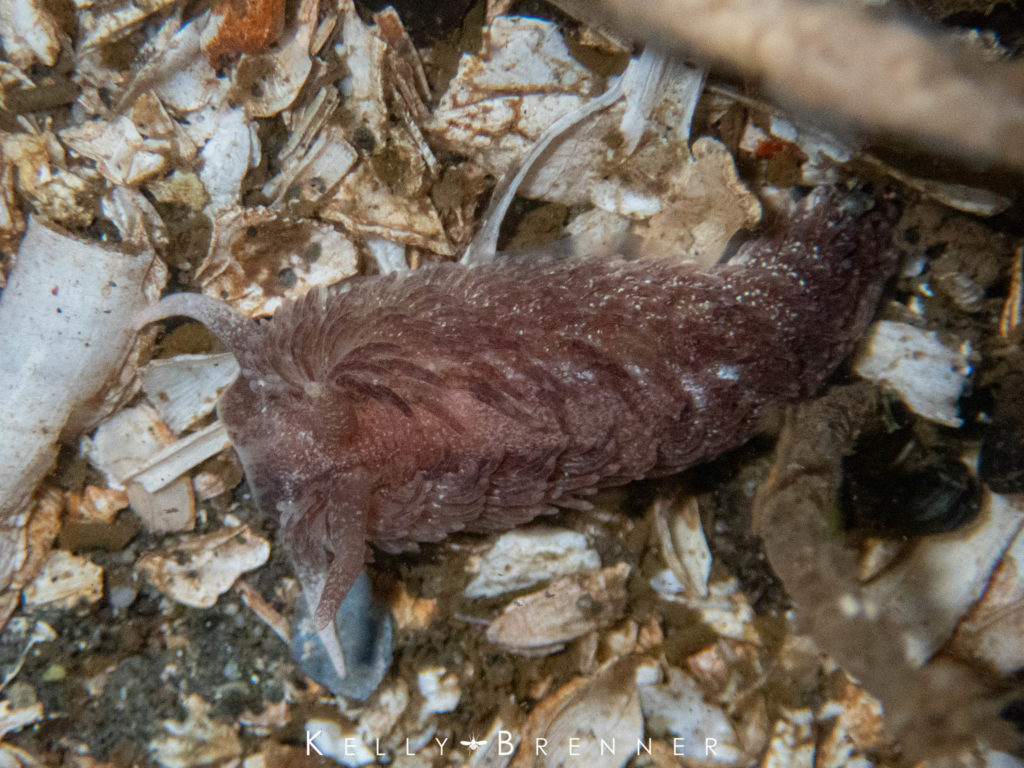
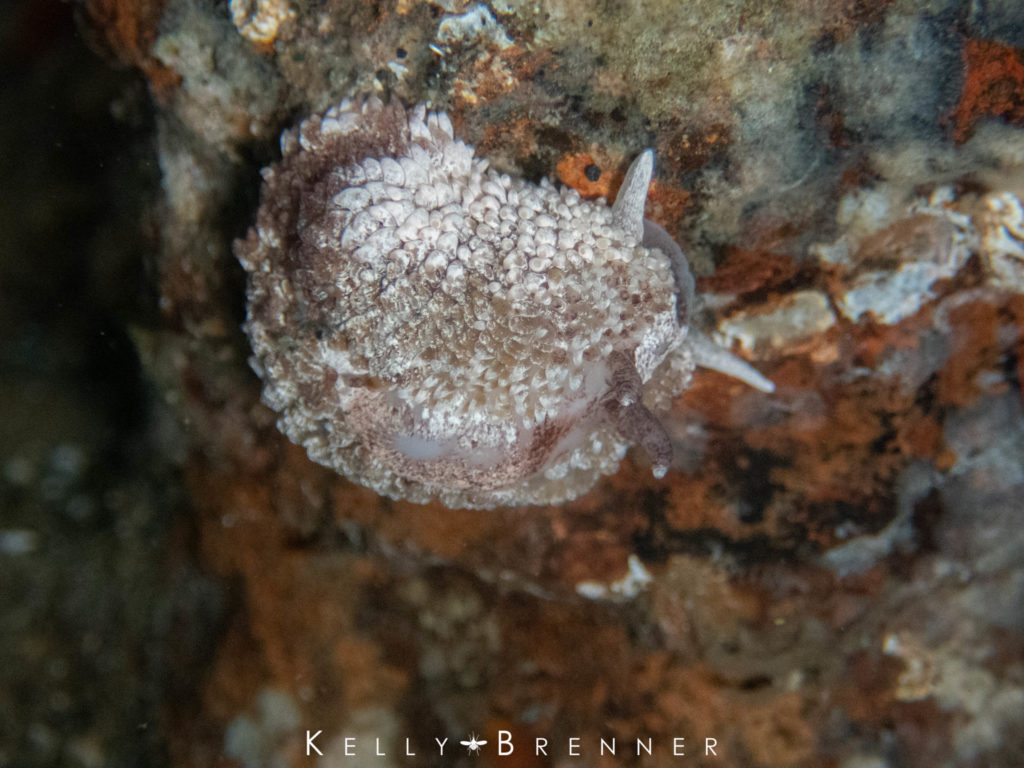
One in particular stood out to me because of its peculiar coloration. I’ve seen Shaggy Mouse in browns, white and pinks, but this one had all the colors in patches.
Leopard Dorid
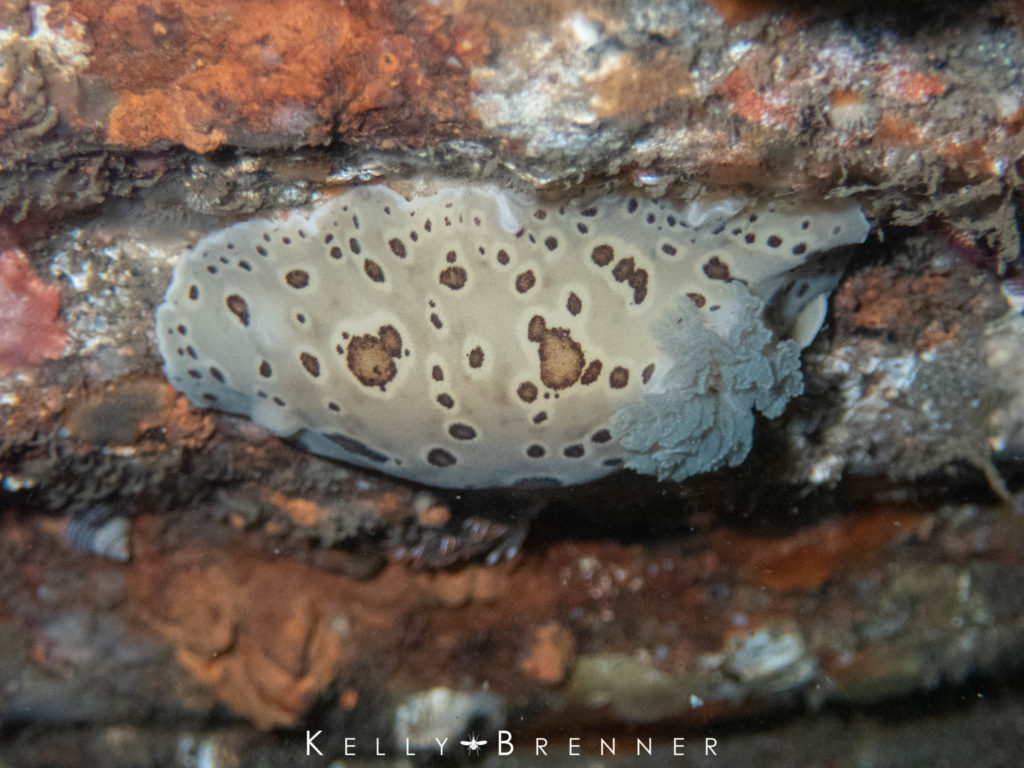
Barnacle-eating Dorid
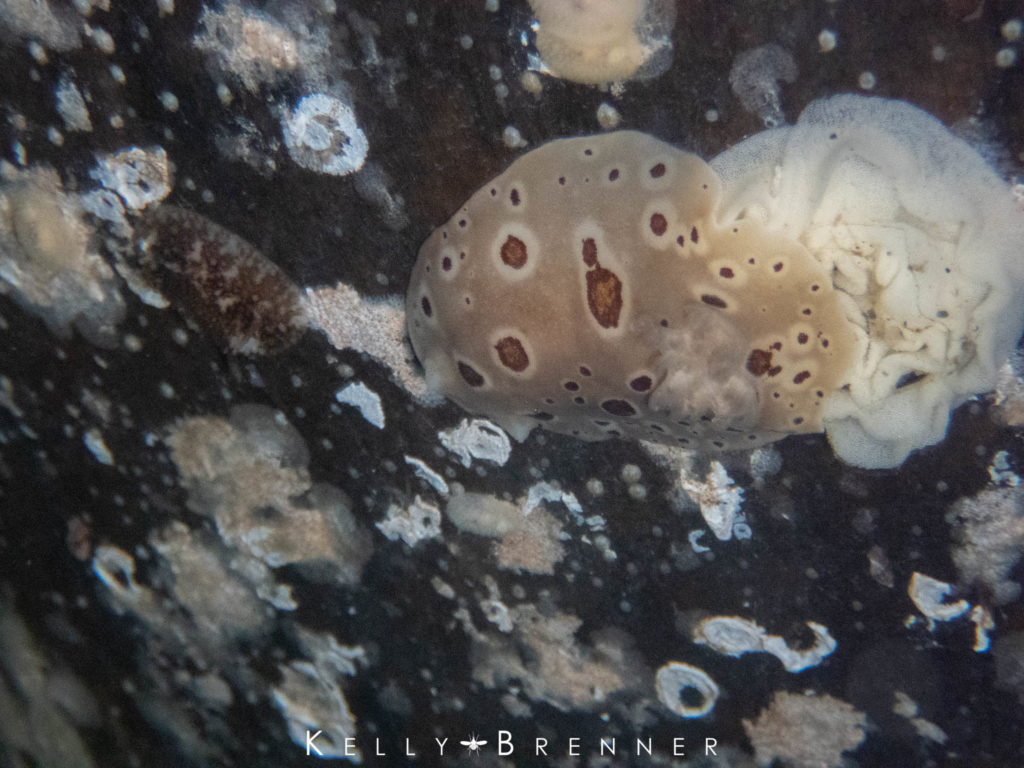
White & Orange Tipped Nudibranch
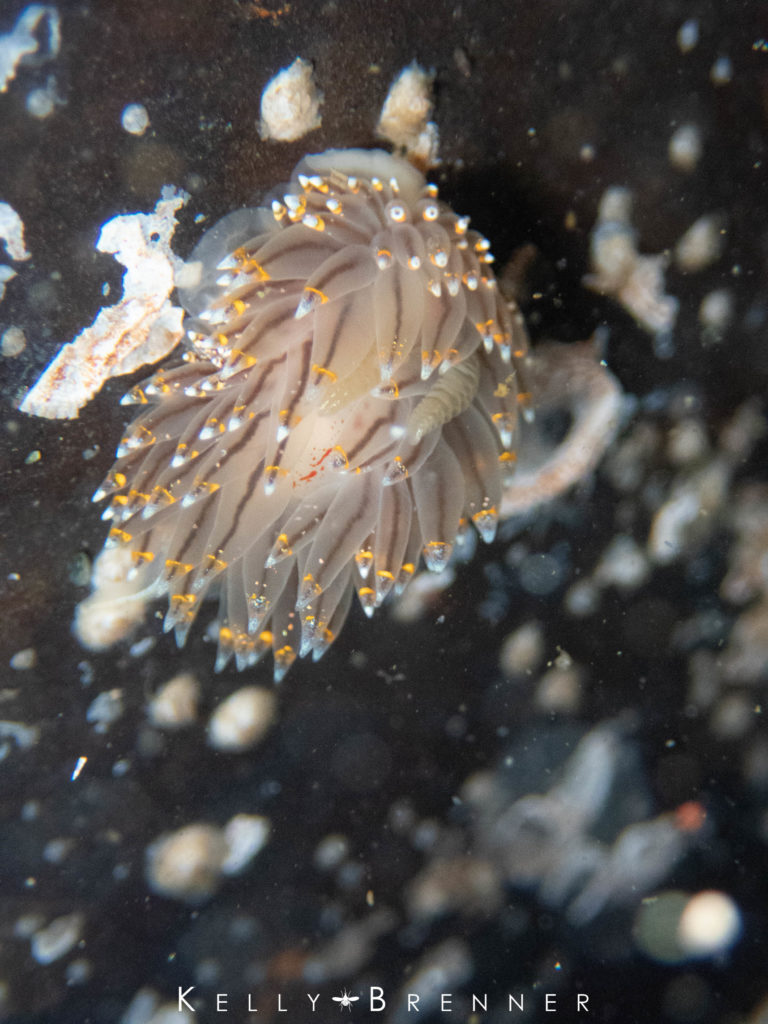
Red-Gilled Dorid
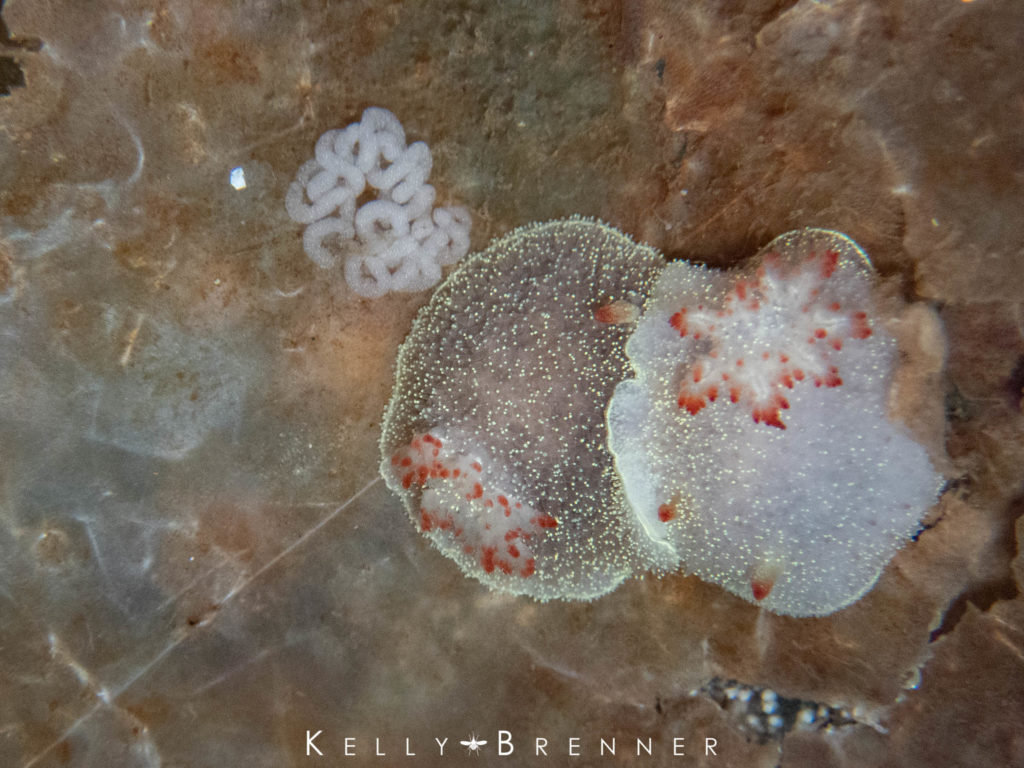
This was my second most exciting find of the day, not one, but several Red-gilled Dorids (Acanthodoris nanaimoensis). Although I’ve seen them there before, I’ve never encountered more than one or two at a time, but I found five all close together, two in pairs, apparently mating.
Monterey Sea Lemon
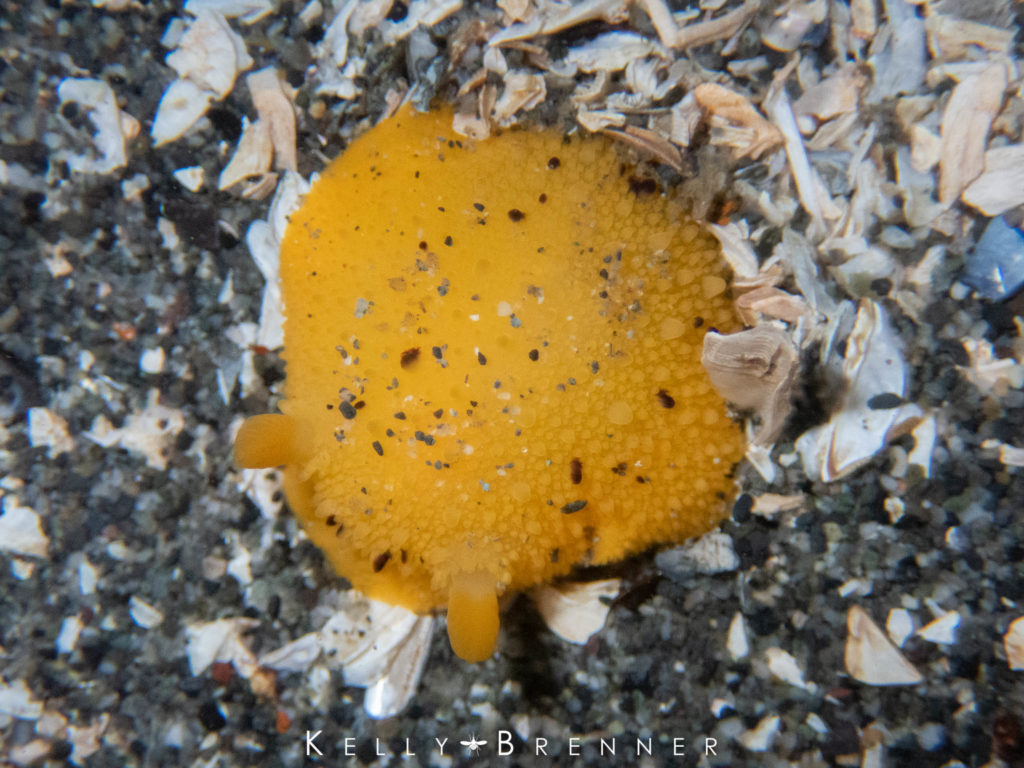
Sea lemons are always likely to be found at this location, but which ones are a mystery. They are easy to confuse with one another and I often note them as ‘sea lemon’ and try to figure out which is which when I get home and can look closer at the photos because the differences are often too subtle to be able to see underwater. This one looks like a Monterey Dorid (Doris montereyensis).
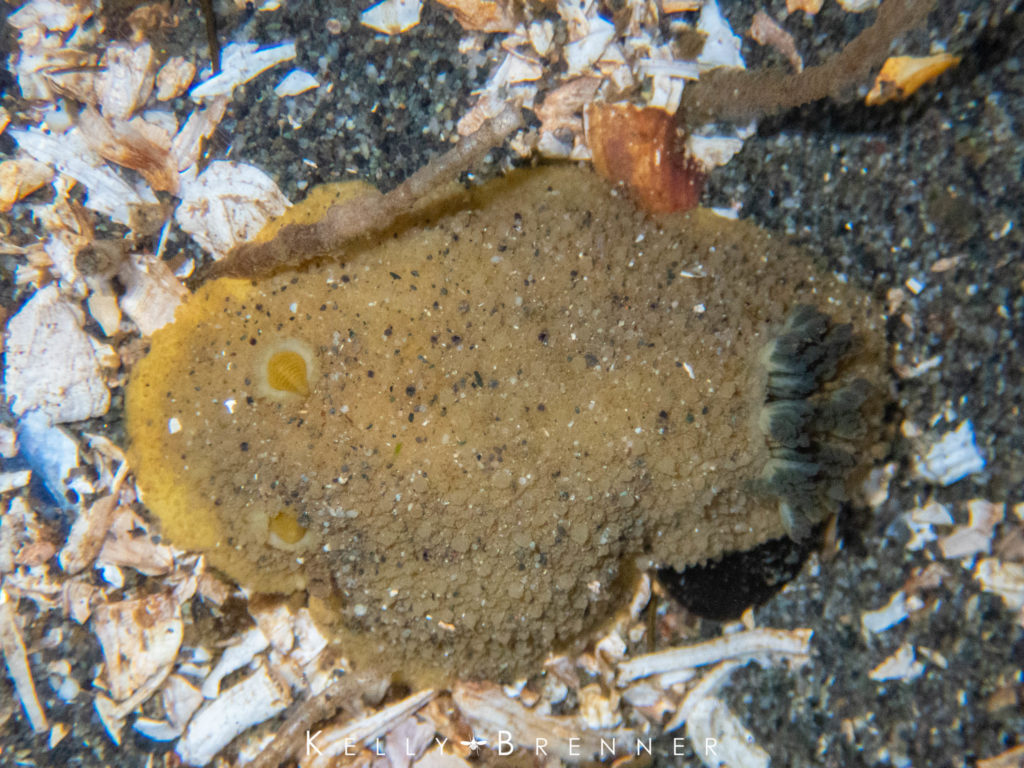
There was a second which was more peculiar because of the black gills. They are usually yellow.
Heath’s Dorid
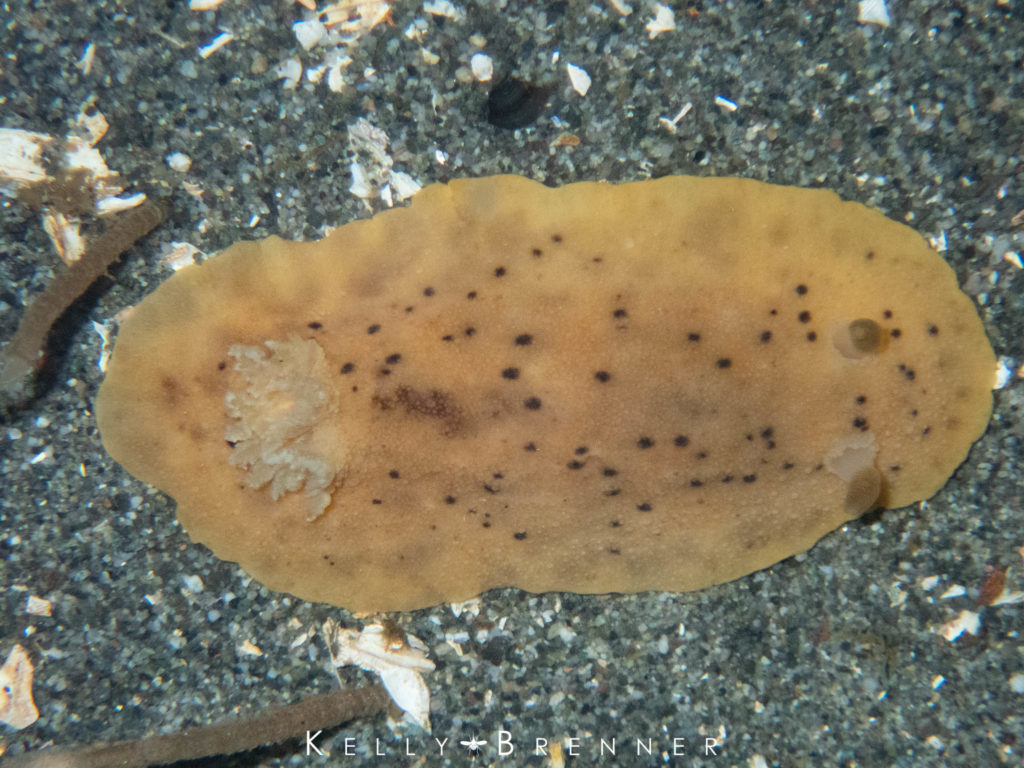
This one, I believe is a Heath’s Dorid (Geitodoris heathi), identifiable by the dark patch next to the gills.

